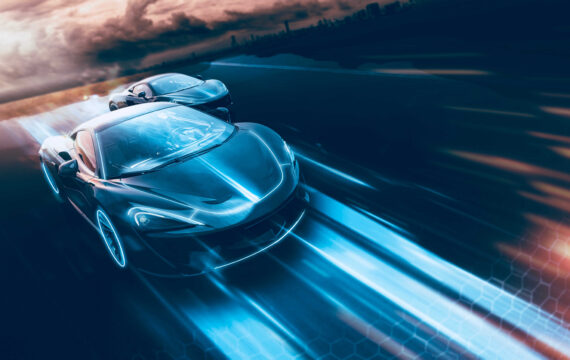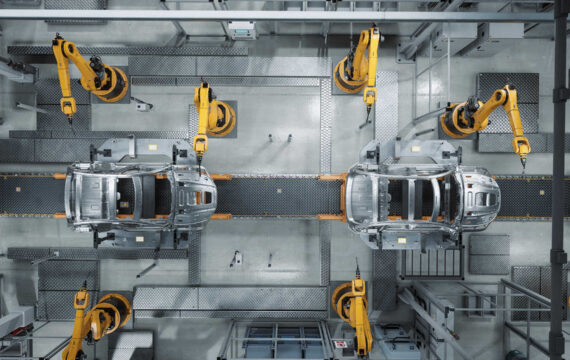Autonomous cars are a hot topic – and a sore point – for automakers. Technology that provides access to high-level autonomy is critical for future automotive development. With the evolution of IoT, our cars can see, hear, and even predict the future. Vehicles are becoming big moving machines connected to the internet: they not only drive us but also entertain us; allow us to pay bills, make calls, and shop; and even save lives during emergencies.
Big data for autonomous vehicles is what helps make use of sensors. Without access to a steady and reliable stream of self driving cars big data, an autonomous vehicle will be useless on the road – it won’t know what to do with the data it receives. A connected car without data is like an ignorant baby: it sticks its fingers into the sockets, grabs a knife, or tries to catch a spark because it doesn’t know that it’s dangerous.
In this article, you’ll find out:
- How autonomous vehicles big data works for a better outcome
- What sensors help driverless vehicles to collect information
- How autonomous cars work with big data
- Use cases of big data in the automotive industry
Big data services are transforming the automotive industry. You’ve probably heard this cliché a dozen times. But it’s true. There would be no striving for autonomy without big data. In 2014, McKinsey valued the global market for connectivity components and services at around $38 billion; by 2020, the industry is expected to grow to an impressive $215 billion.
What is the share of the automotive industry in this market? It looks impressive: big data investments within this field are expected to grow at a CAGR of around 16% over the next three years. This is not surprising: a driverless car will use and generate around 4000 GB of data per day, estimates Brian Krzanich, the former CEO of Intel. Where does all this information come from?
How big data in autonomous cars finds its use
Driverless cars use big data that comes from various built-in IoT devices:

Source: Intel
Just as autonomous cars can’t exist without big data, they also can’t exist without sensors to gather this data. In an autonomous car, information from various built-in sensors is processed and analyzed in milliseconds. This allows the car not only to make a safe journey from point A to point B but also to pass information about road conditions to the cloud and therefore to other vehicles. big data in self driving cars is then shared with other cars.
To see and sense everything around itself, an autonomous vehicle usually leverages three types of sensors: camera, radar, and lidar.
Sensors help driverless cars gather data

Source: ITransition
Cameras help a vehicle get a 360-degree view of its surroundings. More than that, modern cameras provide a realistic 3D image, recognize objects and people, and determine the distance to them. The problem is that poor weather conditions, damaged signs, and insufficient contrast test the camera’s capabilities. Luckily, other sensors can help.
Weather conditions don’t influence short-range and long-range radar. Short-range waves help with eliminating blind spots and assist in lane keeping and parking. Long-range radar can measure the distance between the car and other moving vehicles and assist in braking. To sum up, radar is aimed at detecting moving objects, measuring distance and speed in real time.
Lidar uses a laser instead of radio waves and can create 3D images of surroundings and map them, creating a 360-degree view around the car.
One more crucial component in autonomous driving is software that helps to analyze big data self driving cars. Being connected to a network, smart cars not only pass information from all their sensors to the cloud but respond to conditions immediately. Some companies collect and provide big data to Tier 1 and Tier 2 vendors that work within the automotive industry. This data includes unique scenarios and videos and images that help driverless cars learn and build a solid background for decision-making on the road.
How does big data in self driving cars work?
A self-driving car must have sensors, AI software, and a cloud server. Next, it should know its location. For that, it uses GPS, and together with data from internal sensors like speedometers and compasses, defines its speed and direction.
Once a car knows its place in the world, it has to understand what’s going on around it. For that, it should map the surroundings using radar and lidar and localize itself within this map. Signs, markers, lanes, and various obstacles are taken into consideration.
Using collected data, a driverless car can build strategies for many possible situations on the road. Data sharing between autonomous vehicles will aid in avoiding traffic jams, taking into account weather conditions and reacting to emergencies.
To sum up, self driving cars big data can be used for the following:
- See and sense – receive information; plan and act based on gathered data
- Map surroundings in great detail
- Identify range, speed, and distance using cameras and lidar
- Communicate with other vehicles and share information
Connected car technology is heading to the point when your car will chat not only with other vehicles on the road but also with road signs, lane markers, traffic lights, and so on. The prerequisite for this high-tech system is big data.
What are the use cases of big data autonomous vehicles?
Think that only smart cars themselves use the data they gather? Think again. The true potential of this data is much greater:
- An automaker can remotely see a problem with your car and immediately inform you through your vehicle.
- With vehicle data, managing a fleet of hundreds or thousands of connected cars becomes an efficient and optimized process.
- Big data is a rich source of behavioral insights, from the gas stations drivers choose to the music they listen to. This information can be used in marketing, sales, and customer service.
- City planning and engineering will become more accurate with big data from connected vehicles: more efficient road planning, early warning systems on dangerous spots, and safer pedestrian walkways are just a few possible outcomes.
- Big data in connected cars can help to develop custom insurance plans for drivers based on their performance.
Use cases of big data from connected vehicles

Source: Medium – UnfoldLabs
Conclusion
The automotive industry can’t develop further without big data. It’s the future of connected and autonomous vehicles: cars will use data like they use gas or electricity. That’s why partnerships with Tier 2 software vendors like Intellias are a modern necessity for OEMs. To provide solutions for big data in the automotive industry, companies must not only possess a background in the automotive industry but also expertise in AI, machine learning, natural language processing, IoT, and platform development.
To find out more about Intellias’ experience with autonomous and connected driving, contact our experts.



